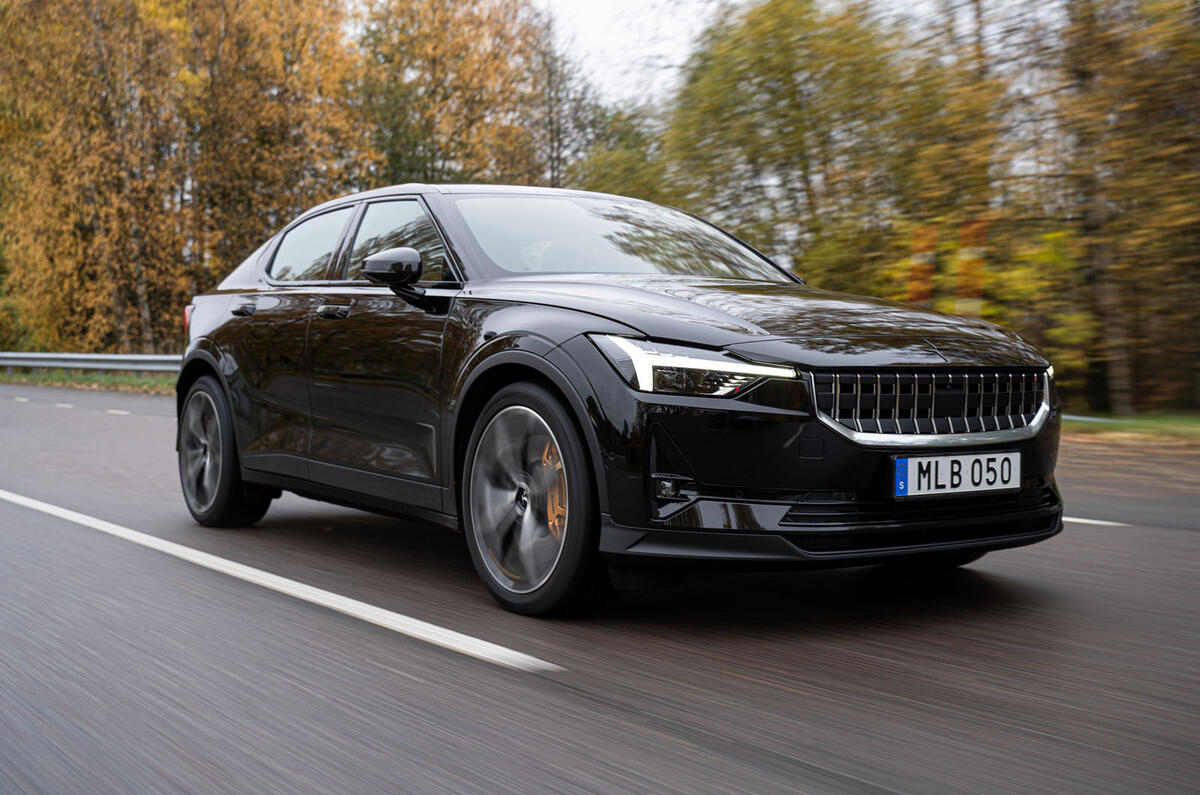Hällered proving ground sits an hour’s drive east of Gothenburg and seems an exemplary place to experience a Polestar 2 for the very first time.
Sets of quiet, remote test tracks wind among the forest and chime with the car’s environmental brief. Unlike the plug-in hybrid Polestar 1, the 2 is entirely electric, with a WLTP range of 311 miles and nothing less than the Tesla Model 3 in its sights.
This place also has space enough to properly exploit the performance on offer. Which is lucky because, with a dedicated electric motor for each axle, the 2 makes 487lb ft – more even than the Nissan GT-R – and does so almost instantly.
But Hällered also feels an odd place to become better acquainted with the 2, which at £49,900 will cut the cost of entry to the Polestar owners club by almost two-thirds and will exist as a big-volume model next to the hand-built, 1500-off £139,000 Polestar 1 grand tourer.
These smaller cars will be assembled in the Luqiao facility of Polestar parent company Geely in China and the battery modules are from LG Chem in South Korea. Siemens in Germany builds the motors and the brand recently opened a 120-strong R&D facility in Coventry. It’s an amazingly global product whose muscularly attractive design will ensure that it draws eyeballs and graces the streets in fashionable places around the world. Yet here we are, standing in the Swedish bush.
But this is where the magic happens. “The first thing the driver gets from the chassis is how the steering feels,” says Joakim Rydholm, the lead chassis engineer and someone not only with a clear mission sense but also softly voiced but nevertheless Italianate levels of passion. “Then the rest of the suspension should work in harmony with the steering,” he says, revealing that the chassis is set up for slight oversteer. He says the manually adjustable Ohlins dampers alone were iterated through 120 different tunes, with removal and hardware changes required each time: “There are no shortcuts: it’s hard work behind the steering wheel to get a good car. The human is sensitive and you cannot calculate that.”












































Join the debate
Add your comment
Those commenting on the transmission tunnel
Not bad.
It's a nice piece of design, it isn't that offensive to the Eye, the price is too out there for what it is, who isn't charging a bit to much for not a lot more?
'The Saint'